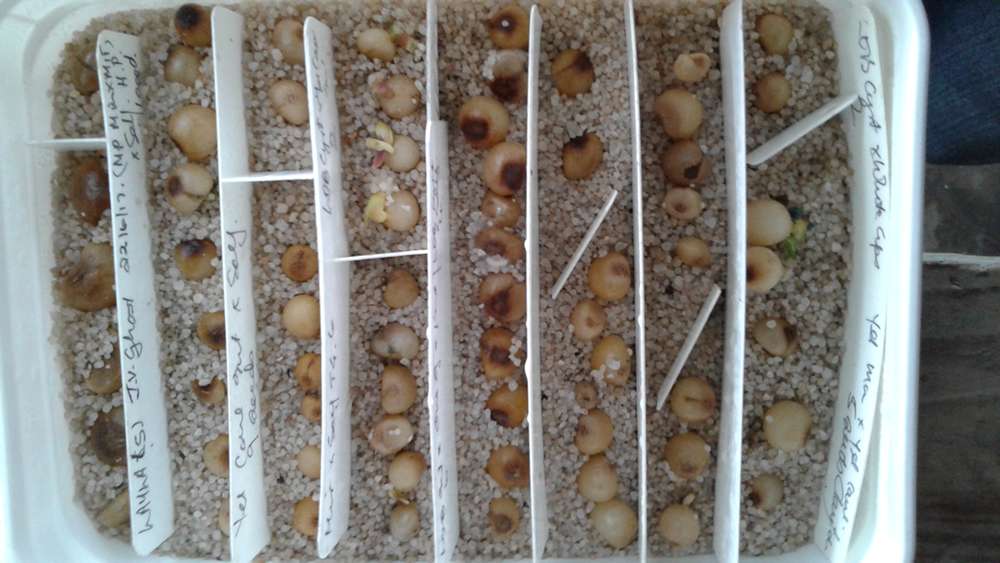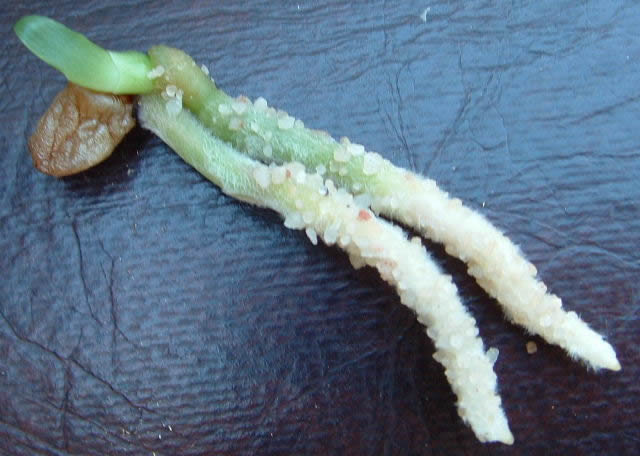Growing Clivia From Seed
Harvesting Seed
Pick the fruit as soon as it starts to change colour or when it turns soft. Open it carefully and remove all the soft pulp as well as the loose fitting membranes that keep the Clivia seeds together. Clean this properly and wash the seeds with an anti fungal solution or a weak solution of dish washing liquid.
Germinating Seeds
If the Clivia seed have not yet sprouted, put a teaspoon full of damp compost in a sealed plastic bag with a few seeds. Place the bag in a warm place or on top of your fridge, near the back where the warm air rises, to speed up sprouting.
Alternatively place clean damp (not wet) coarse sand (river sand is ideal) in a plastic container.
Press seeds 50% into sand making sure that the eye (small dark round spot on seeds where germination will take place) are facing to the side. Don't plant the seed under the soil surface.
Close the lid and place in warm spot for 1 to 3 weeks until the seed has germinated. Do not water again.
When the seeds have sprouted
Take a pot or seed tray, about 15cm deep and put a layer of small stones or coarse bark chips in the bottom. Fill the container with a slightly acid growing medium, such as equal parts of coarse river sand and finely milled bark or a potting mix available at nurseries. (Clivias are not very fussy).
Firmly press down the mix and water well. Then make small holes, at least 2cm apart, to take the little taproots. Gently press each seed into the medium so that half the seed rests below the surface. Handle the seeds very gently.
Place the pot in a shaded position and keep moist by watering once or twice a week with a fine gentle spray.
Seedlings can be left in the pot for up to two years and at the beginning of the third year can be transplanted into permanent pots (especially the yellow ones) or into the garden. Alternatively they can be moved into well-drained individual black bags or pots after one year, in fresh growing medium adding a small quantity of bone meal. (Use one teaspoonful on each 15cm pot).
How to identify the Yellow seedlings?
When the first leaf of the seedlings is about 2cm tall, you will be able to identify the yellow seedlings by looking at the stem. The stems that are green and show no colouring will produce yellow flowers. Mark these seedlings at this stage. This also applies to genuine peach seedlings.
On the other hand, if the stem has a purplish colour, you know the plant will not produce yellow or peach seedlings, but will be pastel, orange or red flowers. This purplish colour disappears when the seedlings are about two to three years old.
Position
Remember that Clivia do not like direct sun, so they MUST be planted in full shade or dappled sunlight. They flower better in lighter shade. A little early morning sun is acceptable.
Keep your “collector’s quality” plants in pots, which will allow you to move them around easily, they could be brought indoors for display or to show off when in full flower or displayed at a show.
GOOD LUCK AND ENJOY YOUR CLIVIA!!

